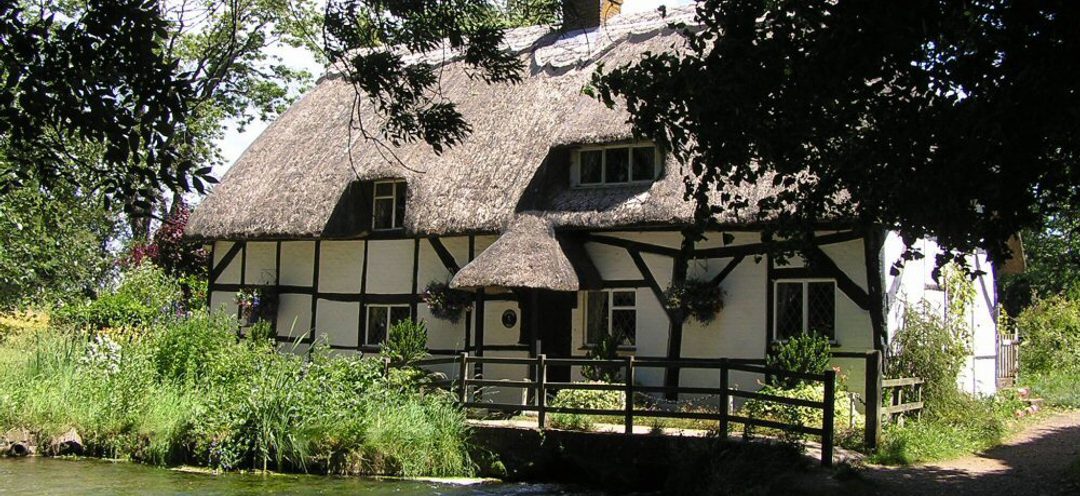Today, people are following a well-trodden path that human feet have been walking for millennia. Traditionally followed by Pilgrims to seek healing and spiritual benefit, this 119-mile route starts at the Shrine of St Swithun in Winchester Cathedral, a focal point for pilgrims in search of blessings and healings from the popular saint associated with miracles. Pilgrims then journey across the glorious landscapes of southern England, before arriving at the shrine of Saint Thomas Becket in Canterbury Cathedral, Kent.
Explore the Pilgrims' Way
Internationally recognised by the New York Times, The Pilgrims' Way is a popular route for walkers and hikers, and offers a chance to experience the landscape and history of the region. Yew-lined paths, chalk grasslands and meadows meet ancient woodlands and babbling brooks on this monumental journey.
The actual route of the pilgrims has been difficult to pin down over the centuries, but there is a natural artery along a historic Roman road that follows a ridge at the top of the North Downs. The trail is famous as the pilgrims in Geoffrey Chaucer’s The Canterbury Tales followed the same route.
We recommend starting at Winchester Cathedral, a hive of not only spiritual but cultural activity. Climb the Pilgrim Steps, pilgrims may well have approached the shrine on their hands and knees. Make sure you save some energy to ascend its tower to take in views of the countryside. The good news is the remainder of your journey will be relatively flat, just with a few uphill challenges.
For over a thousand years, Winchester Cathedral has been a significant starting point for many pilgrimages to other holy sites, one of the most significant being Canterbury. Whether this was to pray at the Shrine of St Swithun, or to begin the Pilgrims’ Way to Canterbury, or to continue on the Camino Inglés, the ‘English Way’, to Santiago de Compostela in northern Spain, pilgrims have journeyed to and from Winchester along many pilgrim paths, east and west, north and south.
The Pilgrims’ Way merges with other routes, between Winchester and Farnham follow St Swithun’s Way, passing through pretty towns of Alresford (pictured, below: The Fulling Mill at Alresford) and Alton, as well as Chawton which was Jane Austen’s home. The trail then follows the waterfront along the River Wey, and then from Farnham along the North Downs Way to Canterbury.

Where to eat
This section of the Pilgrims’ Way is also one that is bursting with local delicacies – from ice cream to Watercress, gin to sparkling English wine, we recommend stopping for a refuel in one of the independent cafes and restaurants dotted along the high street, or a welcoming countryside pub. We recommend:
The Old Vine – an 18th century inn steeped in charm and character just across the Cathedral in Winchester’s bustling Square
Chesil Rectory – dine on modern British classics in a 15th century building (pictured, right)
The Wykeham Arms – luxurious country pub with a menu featuring locally-sourced ingredients.
Pulpo Negro, Alresford – serving up Spanish dishes using the best, fresh local produce.
Caracoli, Alresford – coffee shop and food store serving homemade cakes, savoury bakes and seasonal goodies.
The Globe, Alresford – 15th century pub with a garden and terrace on the banks of a small lake.

Where to stay
Why not spend some time in Winchester and enjoying many of our other attractions, riverside walks and independent shopping before embarking on the first leg of the Pilgrims’ Way? You’ll find pubs, inns and bed and breakfasts in the city centre as well as along the route.
Hotel du Vin – luxury boutique hotel with elegant rooms.
The Winchester Royal Hotel -16th century hotel offers blend of modern and tradition in relaxed surroundings (pictured, right).
The Swan Hotel – a charming 18th century hotel nestled in the centre of Alresford.
The Bell Inn – a lovingly restored grade two listed former coaching inn in the heart of Alresford.

What is Pilgrimage?
A pilgrimage is a devotional practice which consists of making a special journey to a place of spiritual significance.
The reasons people take the pilgrim road are varied. For some it is to deepen their faith and knowledge of God, for others it is to reflect on change in their lives or to seek healing, while for others it is an opportunity to reengage with the natural world and themselves through human encounters and the challenge that the journey often brings.

